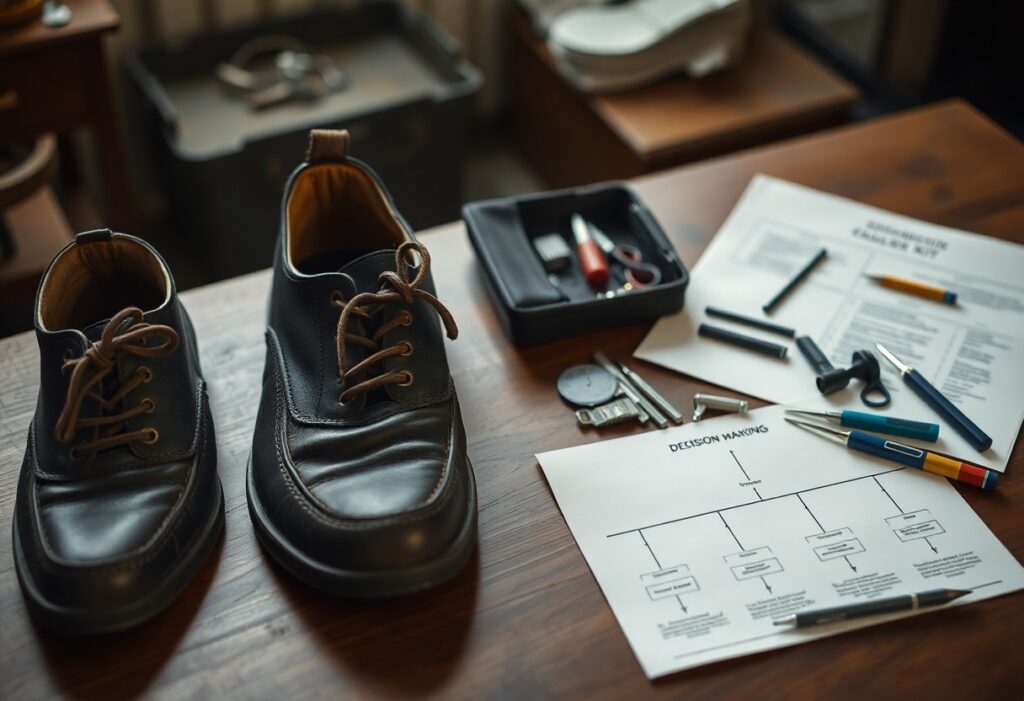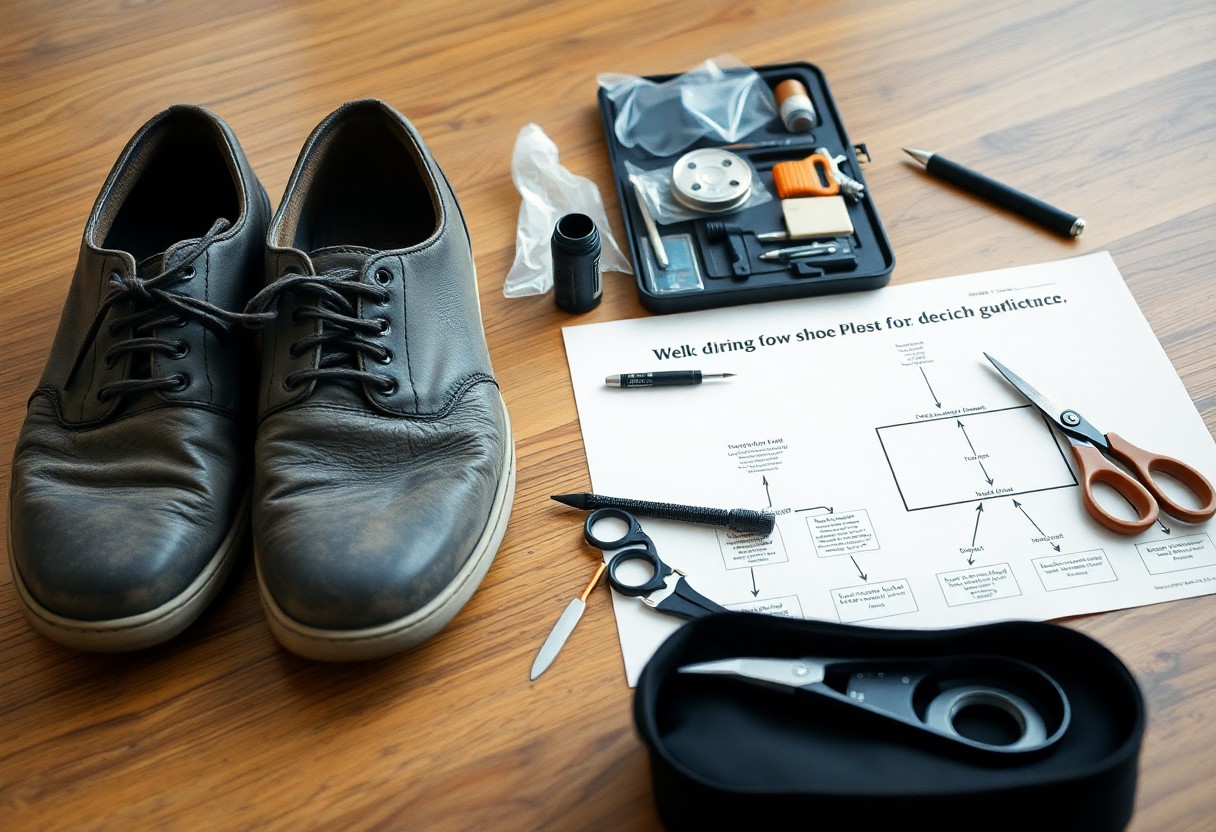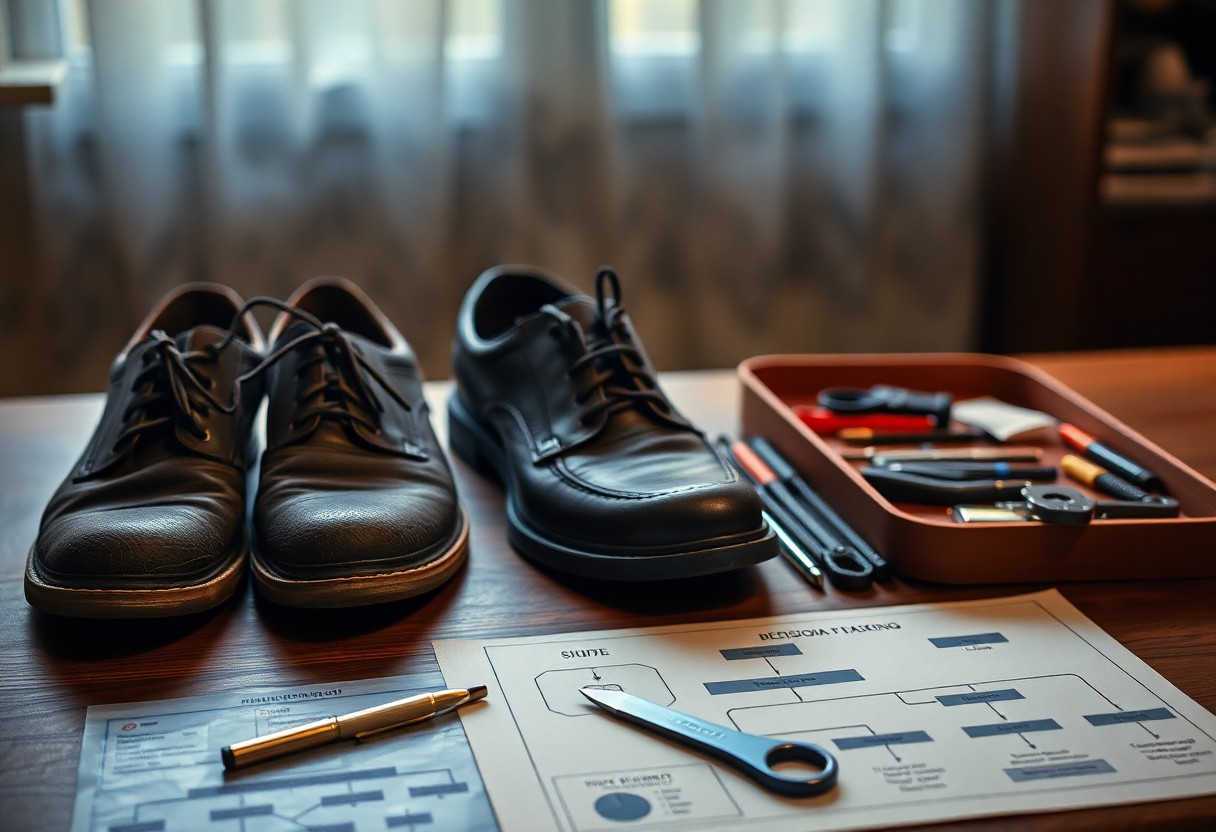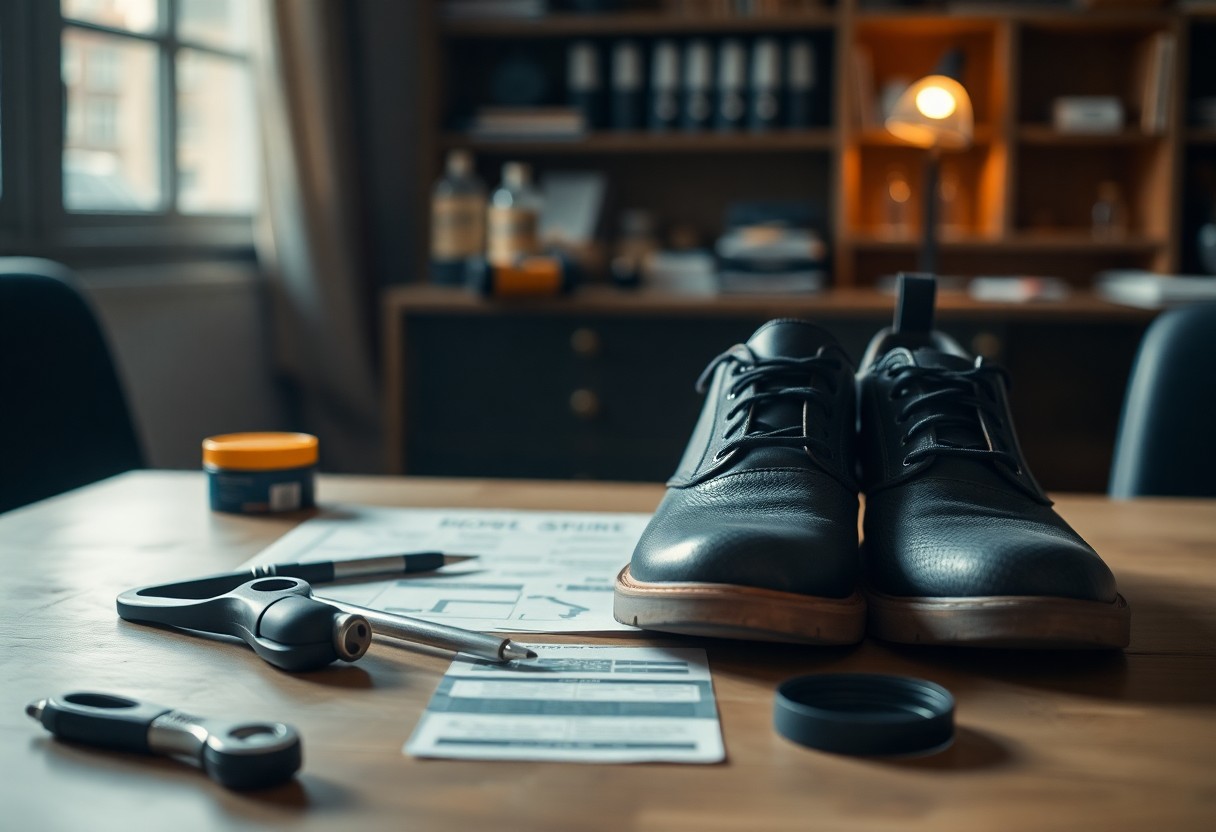
This detailed guide is crafted to equip you with the necessary knowledge to make informed choices about your footwear's future. When your shoes start to show signs of wear, deciding between repairing them or buying new ones can significantly affect your budget while also prolonging the lifespan of your favorite shoes. Your decision should be guided by several important considerations, including the initial quality of your shoes, the extent of the damage, and the cost of potential repairs. For example, if you own high-quality leather shoes that are experiencing sole wear or heel deterioration, repairing them might be a wise financial choice. On the other hand, if the upper leather is severely damaged or if multiple structural issues exist, replacement may be the necessary route. Gaining insight into these key factors will empower you to maintain your footwear effectively and make economically sound decisions.

Explore Common Types of Shoe Damage to Make Informed Decisions
Before deciding whether to repair or replace your shoes, it's crucial to understand the common types of damage that can affect your cherished footwear. Shoes can sustain wear in several key areas, including soles, heels, uppers, and structural components. Early recognition of these issues can significantly boost your ability to make knowledgeable decisions about the necessary repairs.
| Damage Type | Repair Possibility |
| Sole Wear | Usually repairable |
| Heel Damage | Highly repairable |
| Upper Leather Cracks | Limited repair options |
| Structural Issues | Case-dependent |
| Cosmetic Damage | Mostly repairable |
Proactively Address Sole and Heel Issues for Enhanced Durability
The soles of shoes often show the first signs of wear, and heel deterioration is one of the most common problems. It's vital to pay immediate attention to your shoes if you notice uneven wear patterns or worn-down edges on the heels. Promptly addressing these issues can prevent further damage and improve the overall comfort and longevity of your footwear. Regularly inspecting your shoes helps maintain their condition, ensuring they serve you well for an extended period.
Identifying Upper Leather Issues and Their Implications
If you own leather shoes, you may frequently encounter issues such as creasing, cracking, and scratches. These problems can emerge from everyday wear and a lack of proper care. Understanding the severity of leather damage is crucial, as they can vary significantly. Some shoes might only have surface scratches that are relatively easy to repair, while others may exhibit deeper cracks that complicate the repair process, requiring more extensive work and potentially higher costs.
Understanding the Consequences of Structural Damage in Footwear
Structural problems in shoes, such as separated soles, broken shanks, and damaged welts, can severely affect both comfort and safety. The structural integrity of your shoes plays a pivotal role in their functionality. Repairs to these elements usually require professional intervention. A knowledgeable cobbler can assess the damage accurately, determining whether the issues are repairable or if replacement is the more sensible option. Understanding these factors is essential in maintaining the safety and comfort of your footwear.
Revitalizing Your Shoes: Addressing Cosmetic Damage for Aesthetic Appeal
Surface scuffs, color fading, and minor scratches fall under the category of cosmetic damage. Fortunately, with the appropriate care and treatment, your shoes can often be rejuvenated. Cosmetic repairs are usually among the most cost-effective options available. Professional cleaning and refinishing can restore your shoes to a nearly new condition, enhancing their visual appeal and ensuring they look their best for any occasion.

Essential Factors to Consider Before Choosing Repairs Over Replacement
Prior to deciding whether to repair or replace your shoes, it's essential to evaluate several critical factors. These include the age and condition of the shoes, a comparison of repair costs versus the price of new shoes, the quality of materials, and any personal attachment you may have to the footwear. Each decision should merge practical assessments with economic considerations to arrive at a well-rounded conclusion.
- Overall condition assessment
- Cost comparison
- Material quality check
- Sentimental value evaluation
Evaluating Your Footwear's Age and Overall Condition
For shoes that are relatively new, perhaps under two years old, and show minimal wear aside from sole or heel issues, repairs can often be a valuable investment. It’s essential to check the upper materials for signs of cracks, review the condition of the insoles, and carefully examine the stitching's integrity to ensure your footwear is still in good condition. This comprehensive assessment will help determine if your shoes are worth mending or if a replacement is in order.
Cost Comparison: Weighing the Benefits of Repairing Versus Buying New Footwear
| Basic Repairs | €15-60 |
| Major Repairs | €70-200 |
| New Quality Shoes | €200-500 |
As a general guideline, repair costs should not exceed 50% of the price of new shoes for the decision to be considered economically viable. This benchmark is crucial when weighing your options, ensuring you maintain financial stability while caring for your footwear.
| Heel Replacement | €15-30 |
| Half Sole Repair | €70-120 |
| Full Sole Repair | €130-200 |
| Heel Lining | €25-60 |
Assessing Shoe Quality and Material Durability for Informed Decisions
The construction type and the quality of materials in your shoes are critical factors to consider in your decision-making process. Welted shoes made from full-grain leather are typically more amenable to repairs than cemented shoes crafted from synthetic materials. The ability to repair a shoe often correlates directly with its construction method, impacting the overall decision on whether to repair or replace.
High-quality welted shoes can usually withstand multiple repairs, while lower-cost cemented designs may not justify the expense and effort required for fixing. Understanding these construction elements will lead you to make more informed choices about your footwear management.
Reflecting on Sentimental Value When Making Footwear Decisions
Even shoes that have seen better days might be worth repairing if they hold special significance or are rare vintage finds that carry sentimental value. The comfort, fit, and emotional connection to your footwear can justify higher repair costs. As you evaluate your options, consider these personal values that may sway your decision towards repair instead of replacement.
Determining the Right Time to Repair Your Shoes
Your choice to repair shoes should depend on their overall condition and inherent value. If your footwear features quality leather uppers and has a solid construction, repairs can greatly extend their functional lifespan. It's wise to consider repairs when the damage is localized to specific areas, like soles or heels, and the overall structural integrity remains unblemished.
Identifying Repairable Conditions in Your Footwear
There are numerous issues that indicate your shoes are worth repairing, such as worn soles, damaged heels, loose stitching, and minor leather scuffs. If the upper leather is still intact and the insole remains crack-free, your shoes are good candidates for repair. Basic repair costs generally range from $15-60, making them a financially prudent choice.
Recognizing Cost-Effective Repair Scenarios for Your Shoes
The optimal time to repair footwear is when the repair cost is less than 50% of the price of new shoes. High-end leather shoes, particularly those with welted constructions, are typically worth mending, especially when basic resoling ($70-120) is significantly less than acquiring new high-quality footwear.
Conditions that make repairs worthwhile include solid construction, minimal wear on upper parts, and damage confined to easily replaceable components. Ensure your shoes have intact insoles and uncracked upper leather to justify repair expenses ranging from $25 for heel replacement to $200 for full sole repairs.
Anticipating the Benefits of Professional Repairs
With properly executed repairs, you can expect restored functionality and a significantly extended lifespan for your footwear. Well-repaired shoes can offer several additional years of use, particularly with quality resoling or heel replacements. The expected longevity of repairs may vary depending on the type performed: heel replacements can last anywhere from 6 months to 2 years, while resoled shoes can provide an extra 2-5 years of service with proper care. Your repaired shoes should feel comfortable and stable, retaining their original fit and support throughout their extended use.
Identifying When It's Essential to Purchase New Shoes
It becomes necessary to replace your footwear when repair costs exceed 50% of the price of new shoes, or when structural damage makes repairs impractical. Warning signs that indicate it's time for a new pair include severe cracks in the upper leather, damaged insoles, or multiple repair needs arising concurrently.
Spotting Situations That Are Beyond Repair
Certain types of damage are irreparable, and it's important to recognize them promptly. Look for deep cracks in multiple areas of the upper leather, severely damaged insoles, or widespread structural failures. When these issues arise, it’s prudent to begin shopping for replacements rather than attempting repairs.
Evaluating Economic Factors for Repair Versus Replacement Decisions
Not all repairs are equally economical. Basic repairs, like heel replacements (€15-30) and sole repairs (€70-120), can be cost-effective choices for maintaining quality shoes. However, if multiple repairs are necessary at once, it may suggest that it’s time to consider investing in new footwear. Since quality welted shoes typically cost between €200-500, comparing repair expenses to the original price is vital. If total repair costs surpass half the price of new shoes, then buying new footwear becomes a more sensible financial decision.
Prioritizing Safety When Assessing Footwear Condition
Worn-out shoes can pose a significant risk of foot injuries and accidents. Indicators such as completely smooth soles, exposed steel toe caps, or compromised water resistance suggest that your shoes no longer provide adequate protection. Safety considerations should take into account your working environment; if you work in hazardous conditions or require specific safety features, even minor structural damage may render your shoes unsafe. It is essential to prioritize your safety by not wearing damaged footwear.

Follow This Systematic Step-by-Step Assessment Guide for Your Shoes
To keep your shoe evaluation organized and efficient, follow this systematic approach to determine whether to repair or replace your shoes.
| Repair Indicators | Replacement Indicators |
| Worn soles (no welt damage) | Cracked insoles |
| Heel wear (surface only) | Multiple upper cracks |
| Minor scratches | Severe structural damage |
Conducting a Thorough Damage Evaluation for Informed Decisions
The initial step in assessing your shoes is to examine them in adequate lighting. Carefully inspect the soles, heels, upper leather, and insoles for any signs of wear. A half sole replacement typically costs between €70-120, while a full sole repair can range from €130-200.
- Sole integrity check
- Upper leather inspection
- Heel stability assessment
- Insole condition evaluation
Maximizing Professional Consultation for Optimal Repair Outcomes
Seeking damage assessment from a qualified professional can significantly enhance your ability to make informed decisions regarding your shoes’ future. Here are essential tips to consider:
- Obtain multiple opinions if necessary
- Inquire about repair costs upfront
- Request timeline estimates for the repair process
- Compare repair estimates with new shoe prices
When visiting a cobbler, bringing both shoes for a comprehensive assessment is advisable. Document any specific issues you've encountered and inquire about warranty coverage for the proposed repairs. Understanding that a professional evaluation typically costs between €15-30 can help you budget for this service effectively.
Exploring Professional Repair Options for Your Footwear
To extend the life of your shoes, utilizing professional repair services can provide specialized solutions for various shoe-related issues. Local cobblers are adept at handling everything from basic resoling to complex leather repairs, often at a fraction—30-50%—of the cost of purchasing new shoes. Ultimately, the decision to repair hinges on the shoe's quality and the extent of the damage present.
Understanding the Different Types of Shoe Repair Services Available
| Service | Average Cost |
|---|---|
| Heel Replacement | $15-30 |
| Full Sole Replacement | $50-70 |
| Leather Patching | $20-40 |
| Stitching Repair | $10-25 |
| Stretching | $15-20 |
- Resoling – Complete sole replacement
- Heel repair – Replacing worn heel tips
- Leather work – Patching and restoration of damaged areas
- Stretching – Adjusting shoes for a better fit
Choosing a Qualified Cobbler for Your Repair Needs
When searching for a trustworthy shoe repair professional, prioritize certified cobblers with positive customer feedback and a minimum of five years of experience. The best options are usually shoe repair shops equipped with specialized tools and a solid reputation for handling your specific type of footwear effectively.
For instance, you can verify a cobbler’s qualifications by checking their certification from the Shoe Service Institute of America, assessing the cleanliness of their workshop, and asking to see examples of their previous repair work. Local shoe retailers often have partnerships with trusted repair professionals and can provide reliable recommendations.
Making Educated Choices for Your Footwear Maintenance Needs
With the information provided, you now possess the tools to make better decisions regarding whether to repair or replace your shoes. Typically, shoes are repairable when damage is limited to the soles, heels, buckles, or surface scratches. Conversely, consider buying new footwear when you discover cracks in the upper leather or insole, as these repairs often come with higher costs and may not yield satisfactory results. The key is to maintain your shoes properly and attend to repairs promptly. By carefully weighing repair expenses against the shoe’s overall value and condition, you can extend the lifespan of your footwear while saving money in the long term.
Answers to Common Questions (FAQ)
Q: How can I tell if my shoes are worth repairing or if I should opt for new ones?
A: Assess the following key factors: If your shoes have high-quality leather uppers without cracks and only need repairs to soles or heels, then repairs are advisable. Ensure the total repair cost is less than 50% of the price of new shoes. Basic repairs, such as heel replacements ($20-35) and resoling ($70-120), are typically reasonable for quality footwear. If the upper leather displays cracks, the insole is damaged, or repair costs exceed half the price of new shoes, consider purchasing a new pair.
Q: Which shoe repairs offer the best value for their cost?
A: The most cost-effective repairs include heel replacements ($20-35), heel lining repairs ($25-60), and simple regluing of separated parts ($10-20). These repairs can significantly extend the lifespan of your shoes at minimal expense. Half-sole replacements ($70-120) also provide excellent value for quality welted footwear. It's essential not to delay necessary repairs, as doing so can lead to more expensive damage that may ultimately require complete shoe replacement.
Q: What types of shoe damage are generally considered irreparable?
A: Three primary types of damage make repairs impractical: 1. Deep cracks in the upper leather, especially in creasing areas 2. Structural cracks within the insole 3. Multiple significant damages that would require repair costs exceeding the price of new shoes. These issues compromise the shoe's fundamental structure, making repairs unlikely to yield satisfactory results. In such scenarios, purchasing new shoes is typically the better choice.
The Article Guide on deciding when to repair shoes versus buying new practical tips for making the right choice appeared first on My Shoes Finder
The Article Deciding to Repair Shoes or Buy New: Essential Tips Was Found On https://limitsofstrategy.com




Comments are closed